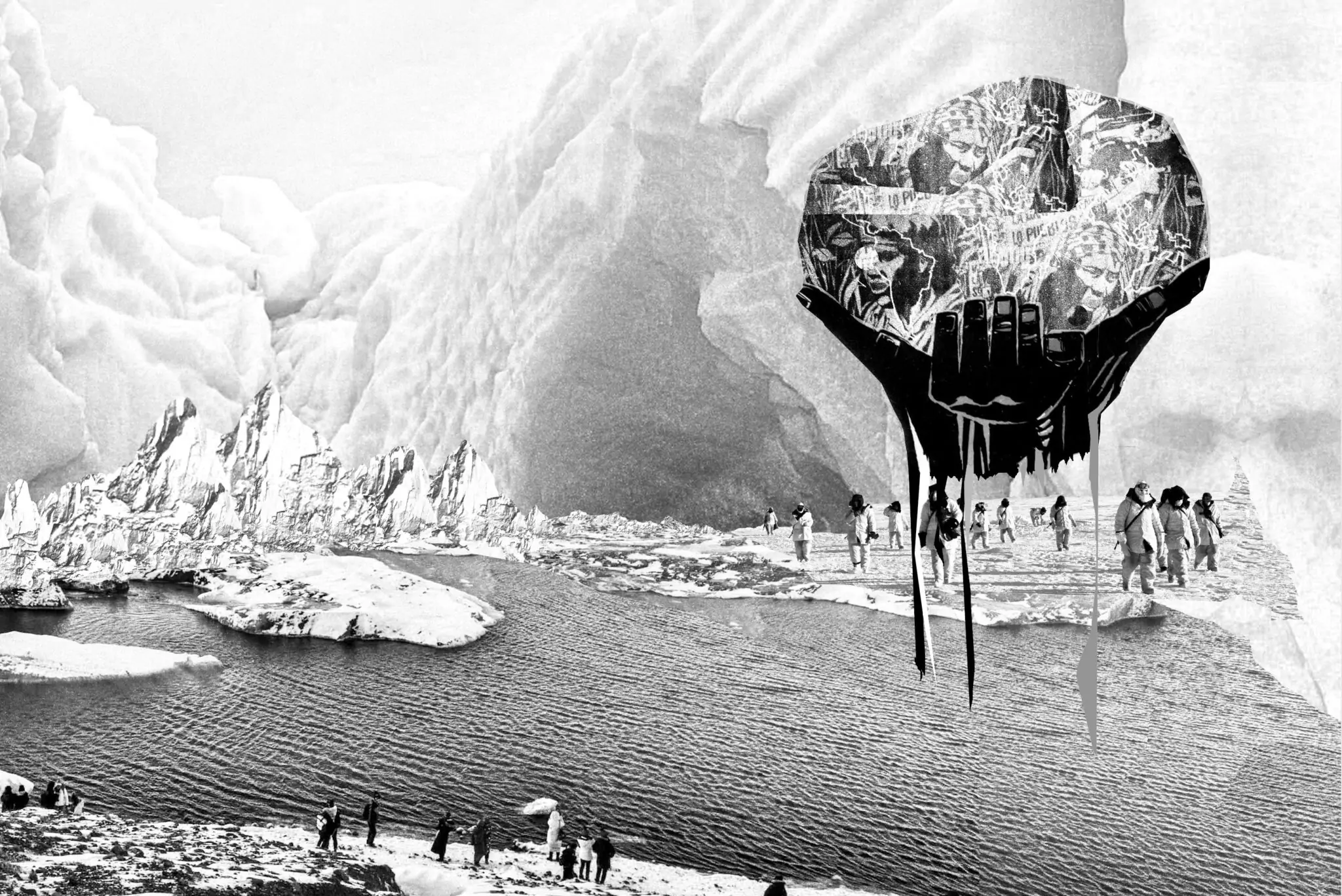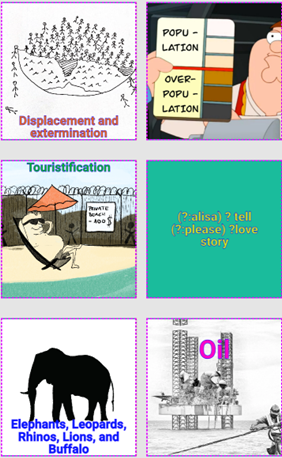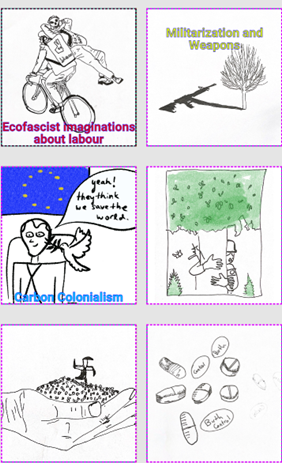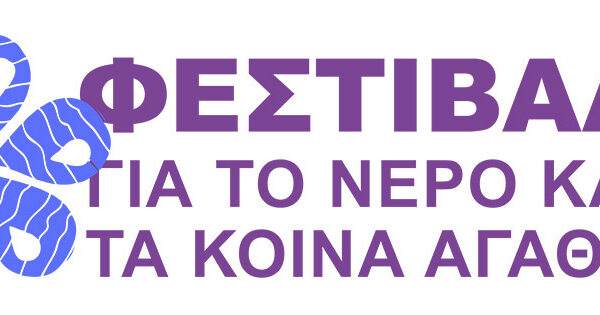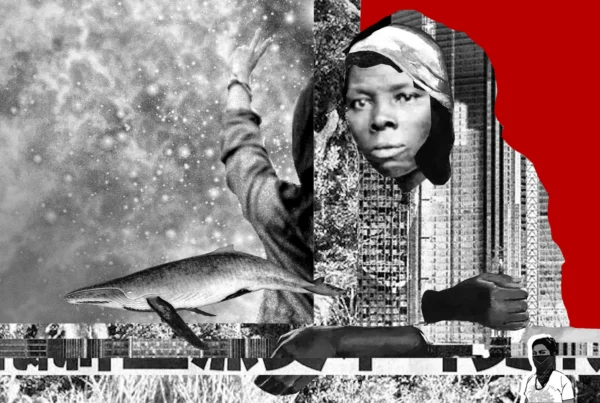By Stephen Bouquin
An in-depth look into the discussions and results from the “Allied Grounds” conference, organized by the Berliner Gazette in Berlin last October, as a space for connecting labor and environmental struggles.
“Allied Grounds,” an international conference on the social dimensions of the climate crisis, took place in early October in Berlin. The conference was the culmination of an annual project of the Berliner Gazette (BG), an independent media outlet founded in 1999, that explored the following questions: What is the ecological dimension of work? What are the common interests and artificial divisions between labor and environmental movements? How can our struggles be united? And how can we reclaim the means of (re-)production and transform them into means of sustainable climate (re-)production?
In its search for answers, the project sought to bring into dialogue two related but barely connected constellations: “In the Global South, environmental concerns have been an integral part of working-class struggles against expropriation, exploitation, and extractivism literally since the colonial-capitalist conquest of the so-called “New World”. In the Global North, in contrast, working-class environmentalism emerged in the 19th century as a response to industrialization and urbanization, while only in recent years have labor and environmental movements reclaimed their potential for alliance.”
Experiments in form
While the evening panels were open to the general public, the daytime workshops brought together participants from countries as different as Australia, Bosnia and Herzegovina, Canada, Greece, Italy, Kenya, Iran, India, Indonesia, Peru, Mexico, Belarus, Portugal, Romania, South-Sudan, Spain, and Turkey.
The workshops were particularly unique in form and content. For three days, five working groups of about ten participants each had the task of discussing an output that could be disseminated on several platforms. This “funnel” method, known as a “hackathon” (a contraction of hacking and marathon), is based on a delicate balance between horizontal exchange and the pursuit of a tangible goal to be achieved by the end of an event.
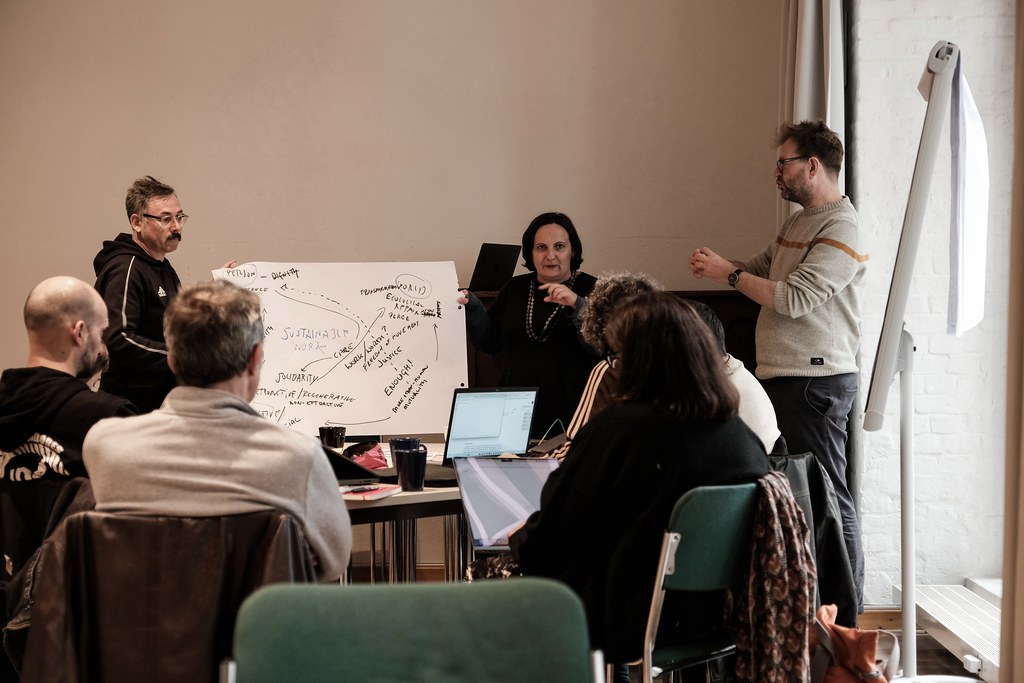
Brainstorming discussions in one of th workshops. Photo by Leonie Geiger, berlinergazette.de cc by nc
During the workshops, brainstorming sessions helped to identify a common problem and to steer the discussions towards collaborative work that would culminate in a joint creation. In each workshop, one of five themes was proposed for debate, but without defining either how they were to be thought about, or what might result from the discussion: “Eco-Internationalism for All?”, “(Un)Working Balkans”, “Jobs vs. Nature?”, “Working Class Environmentalism”, and “Dismantling Eco-Fascism”.
To tackle these issues in advance, BG had created a forum in its online newspaper providing space for responses to the above mentioned key questions raised by the “Allied Grounds” project. During the conference, this corpus of texts served as a kind of implicit reference, which facilitated dialogue on very broad and interconnected issues. All participants in the conference were thus simultaneously actors, moderators, and audience.
Interweaving of issues and themes
One of the original features of the conference was the interweaving of issues and themes that are most often approached in the media and academia in a divided and disconnected manner. In many current discussions, the climate crisis is viewed from a global perspective, and many disparate areas of conflict are taken into account, yet the interconnectedness between these areas remains largely hidden. As a result, the conflicts as such and their common causes remain opaque. For example, the conference showed that the crisis of livelihoods in the countries of the South and the phenomenon of migration cannot be understood without taking into account the destruction of natural ecosystems, neoliberal globalization and the systemic crisis of capitalism.
It is therefore not surprising that “eco-fascism” was repeatedly discussed at the conference. This has become a right-wing battle term, used not least as a hashtag in social networks against the “eco-socialist government in Berlin,” Fridays for Future, and Elon Musk, among others, all accused of establishing an “eco-dictatorship.” However, one look at Marine Le Pen in France is enough to understand the context. Like other right-wingers, Le Pen espouses an exclusionary ecological localism in which immigrants are likened to alien invasive species, while her openly radical right-wing party proclaims slogans such as “borders are the environment’s greatest allies, through them we will save the planet.” Similar discourses exist in countries as diverse as the United States and Austria.
The right-wing fetishization of nature, as the discussions at the conference suggested, can be understood as a “response” to the climate crisis that follows the phase of denialism, but still refuses to question the systemic nature of the crisis. In attempting to mobilize the specter of the “white working class,” the Right displays its well-known demagogic ignorance of the real concerns and real grievances of fragmented, heterogeneous and multiracial working people, who are constantly pitted against one another. In this respect, ecofascism is complementary to green capitalism. In its own way, green capitalism also seeks to inhibit the unity of working people and thus their class power. For example, by undermining (the links between) social and climate struggles, green capitalism seeks to marginalize, decouple or co-opt alliances between the workers and environmental movements, and to keep the perspective of global environmental justice as far away as possible.
But building sustainable alliances is anything but spontaneous. While there is a growing awareness that the causes of the climate crisis are the product of an adrift “racial capitalocene” (Françoise Vergès), it is not enough to bring together struggles that are both highly dispersed and fragmented. For Krystian Woznicki and Magdalena Taube, the curators and main organizers of the conference, this is precisely what justifies these conferences and the methodology they have been using for almost 24 years: “To form alliances and unite, to reach the unconvinced and the hesitant, we must find a common language that resonates across borders and experiences. Before we can tell a common story, we must understand each other and be able to talk to each other. This is first and foremost a practical issue, which is undoubtedly why we have always brought together such a wide range of people – activists, researchers, journalists and creative artists. The result is not guaranteed, it is open.”
An exercise in creativity, collaboration, and learning to listen
The results of the workshops, at the end of three days of intense discussions, may seem modest, but they have considerable potential for multiplication. The group on ecofascism, whose insights I shared above, has produced a series of flashcards to play a game of deconstructing ecofascist stereotypes, such as displacement and climate migration disguised by ecofascists as “alien species invasion.”
- Eco-fascism Flash cards
- created by the workshop participants. Source: Allied Grounds
The group on working-class environmentalism has chosen to focus on sustainable work and the creation of an online toolkit with resources and experiences that can strengthen and expand working-class environmentalism, for instance: the conversion of recuperated and self-managed factories, the struggles for health in the workplace and the community against the toxicity of production, the struggles of peasants for the re-commonization of arable land, the mobilizations for the development of public transport, and so on.
The group on eco-internationalism worked on a feminist platform manifesto, the first lines of which read: “This Manifesto belongs to The Platform, a network of squatted oil rigs in the ocean. The Platform is a living body, inhabited by other bodies, which co-create their network of reliance. Weeds grow here, between solar panels and the hardware. The connections within the network are fragile and unstable. Behind this Manifesto, there is a dream of eco-internationalism for all.” The Manifesto includes a timeline of before the platform and of a possible future; outlines of a book and a workshop, an audio from the first experimental workshop, an acrostic (a collection of words), and stickers to be shared and enjoyed.

Squatted oil rig, created by the workshop participants. Source: Allied Grounds
Meanwhile, the “(Un)Working Balkans” group, focused on ecological and working-class struggles in that region, created a mobilization model for an assembly inspired by climate camps for a meeting of networks and movements June 2024 in Bosnia and Herzegovina, Kosovo or Serbia. And the “Jobs vs Nature?” group left the conference venue to conduct street interviews, asking passers-by for their reactions to slogans (such as “What do you want to produce with your work?”) that the group had created in response to advertisements for ecologically destructive and economically unfair products and had actually also posted on ads at bus stops and train stations.
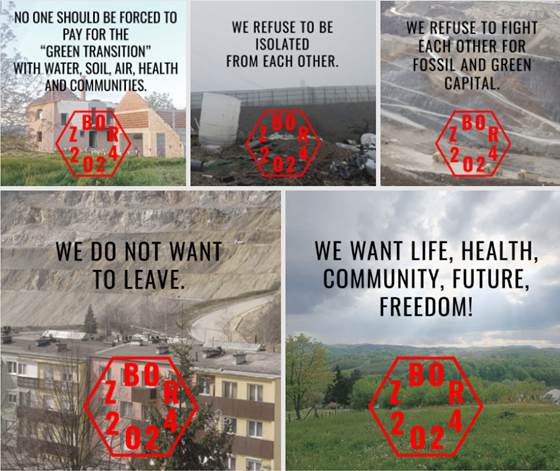
Messages for the ZBOR assembly, created by workshop participants. Source: Allied Grounds
Process-oriented, DIY, oppositional public spaces
For Krystian Woznicki and Magdalena Taube, each conference is both a new experience, different from previous ones, and the continuation of a creative experiment that has nothing to do with a seminar or an academic colloquium, but expresses the ephemeral appearance of a dissident public space. This approach has some affinities with the creation of oppositional public spaces advocated by Frankfurt School theorists such as Oskar Negt. It also echoes the spirit of process-oriented projects, including hybrid events in the years before BG’s founding, such as Documenta X in 1997, curated by Catherine David.
Last but not least, the Allied Grounds approach has strong connections to DIY culture: The idea of simply creating, without instruction and guidance from authority, something that does not exist, but should exist, was realized with the founding of BG and has been tested anew with each new project, each new conference – of which “Allied Grounds” is just one example. So the approach is boundless, evolutionary, and in some ways open-ended, and the traces it leaves and the imitations it can provoke are much broader than the immediately identifiable signals that such a project sends out to the world.
At the end of the day, after the hackathon-style sessions and a few breaks, workshop guests came together for talks to which also the general public was invited.
Get rid of growth, but not the capitalism that produces it?
The first public talk on October 5 focused on potential actors for systemic change. It was moderated by Claudia Núñez, a Mexican-born journalist in the Migration and Borders section of the Los Angeles Times and co-founder of MigraHack. Presentations focused on the links between the climate crisis and migration flows, the rationale for borderization – from “paper borders” (such as passports) to barbed wire –, and the resulting international division of labor.
Jennifer Kamau, co-founder of the International Women Space in Berlin, an initiative of and for migrant and refugee women, explained how the plight of rural people in Kenya is closely linked to local production being tailored to European markets. For example, 60% of the flowers sold in Germany come from Kenya. Industrial irrigation and mono-culture lead to soil depletion and a huge dependence on grain imports, especially from Ukraine and Russia, which inevitably increases expropriation, displacement, and migration pressure.
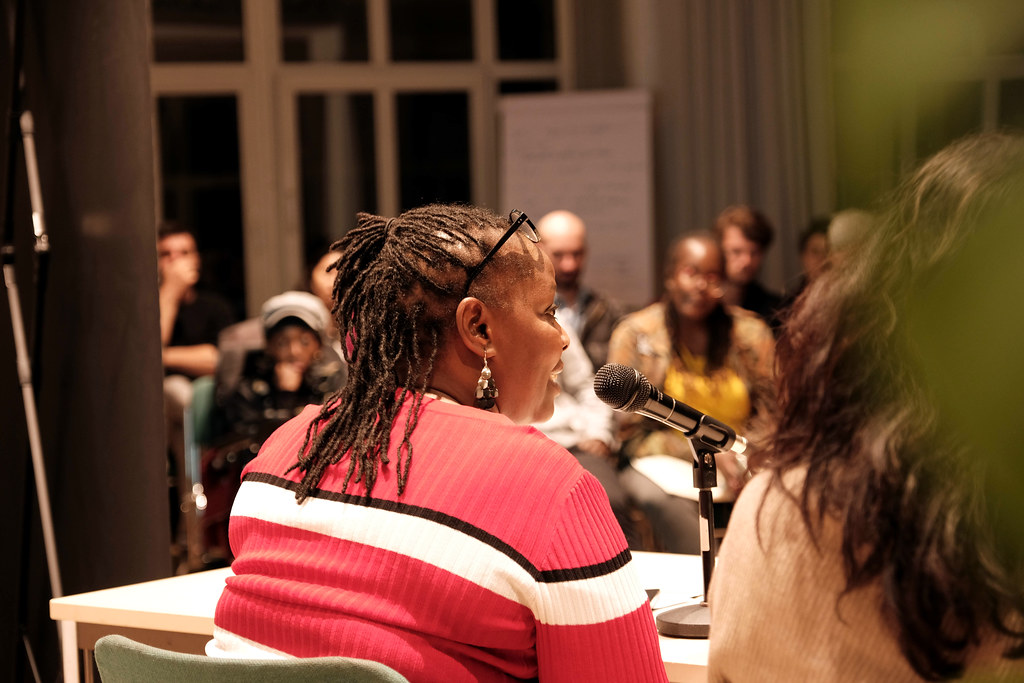
Jennifer Kamau speaking at the Allied Grounds conference. Photo by Leonie Geiger, berlinergazette.de cc by nc
Florin Poenaru, anthropologist at the University of Bucharest and co-editor of CriticAtac, took the critical realist view that the current situation is unlikely to improve in the near future. Green capitalism is a magical vision that claims to solve the problem with the very thing that caused it in the first place. The idea of degrowth is equally “magical,” since we want to get rid of growth, but not the capitalism that produces it. Isn’t this reproducing the problem while claiming to offer the solution? In any case, a certain kind of bourgeois radical environmentalism will be just as futile: Those who advocate civil disobedience, slashing SUV tires, or sabotaging pipelines are really looking to the elites. The action is to get the elites’ attention and convince them to solve the problem. It’s still magic!
Following Poenaru, the problem is that it’s easier to imagine the end of the world than the end or exit of capitalism. There is no easy answer, but there is work to be done in repoliticizing the natural environment, trying to restore or reestablish a natural balance as far as possible, while also taking up the cause of humanity, and empowering the most vulnerable and exploited: the refugee and migrant workforce.
Challenging the Green New Deal in Europe
The second public talk on October 6, focused on working-class environmentalism, was hosted by Rositsa Kratunkova, member of several collectives working on social justice issues in Bulgaria. Participants included Svjetlana Nedimović, a thinker and activist from Sarajevo, moderator of Puls of Democracy – an online publication for critical analysis of the Balkans; Paola Imperatore, a scholar-activist from Turin involved in the struggle of workers occupying the ex-GKN car parts factory in Florence and promoting a transition to supplying parts and components for public trains and buses; and Francesca Gabriellini, a historian and researcher from Bologna, also involved in that struggle.
The speeches underscored the contradictory aspects of the Green New Deal in Europe. Nedimović reflected on the environmental crisis and ecological transition in Bosnia and Herzegovina, where miners’ communities can exert very strong pressures for economic and ecological justice, but seem to have lost their momentum in a situation where the European agenda demands environmental measures while allowing extractivist depredation to unfold. Imperatore and Gabriellini discussed how the ex-GKN experience shows that creative and imaginative grassroots initiatives, when based on grounded alliances between those that are directly affected through work and employment and larger communities of mobilized inhabitants, can have an impact far beyond the immediate or local situation.
Conversation across spaces, scales and subjectivities
The third and final public talk on October 7 was hosted by eco-feminist researcher Anna Saave and dealt with questions of building bridges between struggles. Dario Azzelini, writer and filmmaker based in New York and Mexico City, presented his critical vision of sustainable jobs, as a potential source of mobilization, as long as they raise the question of how production is carried out and what its goals are. Lorenzo Feltrin, researcher at the University of Birmingham, looked back at workers’ struggles against toxicity in the broadest sense, including both mental and physical health. Overcoming the divide between production and reproduction is undoubtedly one of the conditions needed to steer worker mobilizations in a sustainable direction. At the same time, the value chains of capital are changing and expanding in ways that make it more difficult to identify and build links between workers in revolt.
Brett Neilson, from Sydney, author of books such as “The Politics of Operation,” focused his presentation on the question of translating and commonizing the languages of resistance. The issue is not linguistic, but social, in that it requires a similar subaltern positioning across territorial or cultural borders. A politics of translation must allow struggles and solidarities to be articulated and to enter into conversation across spaces, scales and subjectivities. Knowing how to decenter is certainly another important condition. For example, the critique of animal labor is both very North-centric and expresses a kind of ontological horizontality that confuses all forms of living beings. Moreover, recognizing the difference in nature between living forms does not necessarily imply a relationship of subjugation or exploitation.
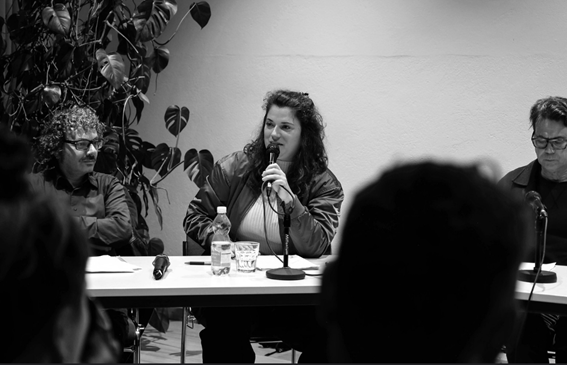
From left: Dario Azzelini, Anna Saave, and Brett Neilson in their panel. Photo by Leonie Geiger, berlinergazette.de cc by nc
The “Allied Grounds” conference was a unique, fleeting experience. While leaving its mark through collective production and output, this new edition of the Berliner Gazette’s annual conferences was, like its predecessors, a source of inspiration and energy. These three days were a practical demonstration that collective intelligence, in a context of horizontality, can foster imagination, generate trust and amplify new narratives that should spread all the more easily because they respond to a real need – for a better world.
The conference was the culmination of BG’s annual project “Allied Grounds,” which engaged researchers, activists, and cultural workers in a variety of forms and encounters with the aim of co-producing knowledge resources, including audios, videos, and texts. Please take a look here: https://berlinergazette.de/projects/allied-grounds/
Featured image: Cover of the BG Allied Grounds project site. Artwork by Colnate Group, 2023 (cc by nc)


